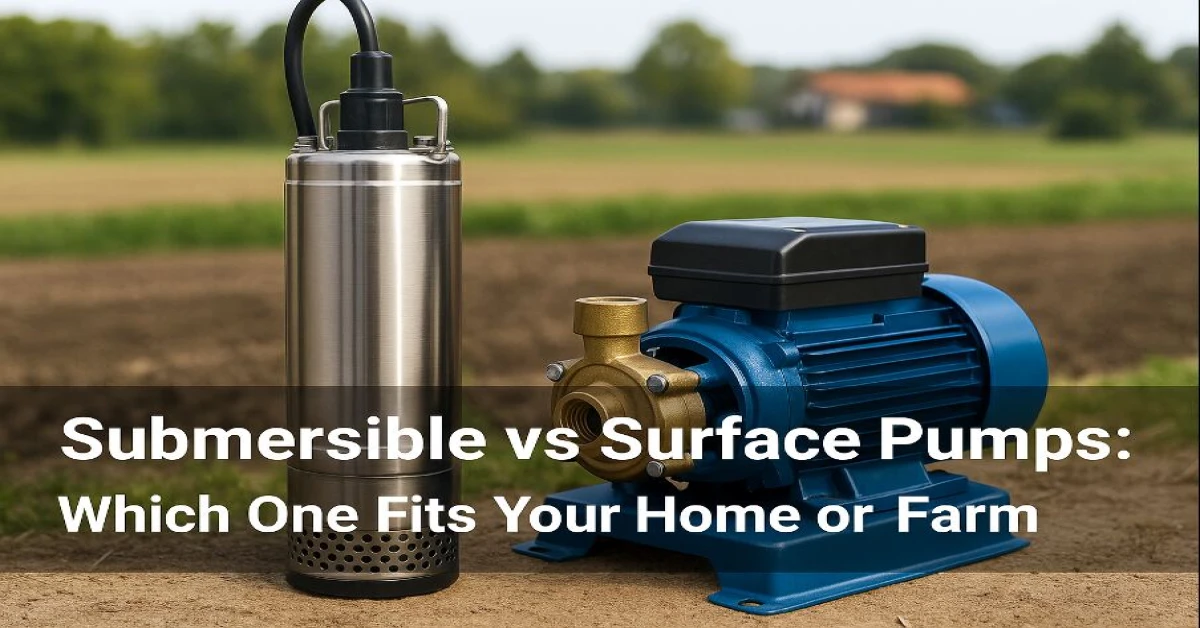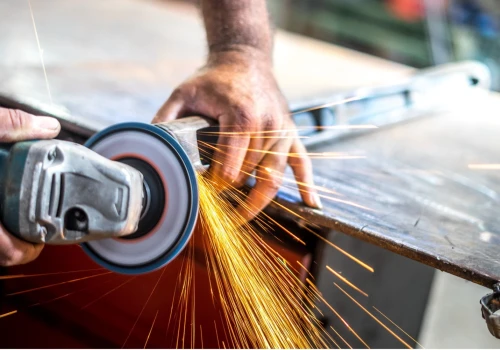
In India, water is everything—whether it’s keeping your city apartment’s taps flowing or ensuring your farm’s crops don’t wither under the sun. A good water pump is like a silent hero, working behind the scenes to make that happen. But choosing the right one? That can feel like navigating a maze. The two main options—submersible pumps and surface pumps—each have their own quirks and strengths. So, how do you know which one’s right for you?
I’ve spent years talking to farmers, homeowners, and small business owners across India, from dusty villages to bustling cities, to understand what makes these pumps tick. This guide breaks down the differences, shares real stories, and offers practical tips to help you pick the pump that fits your life. Let’s dive in.
What’s a Submersible Pump?
Picture a sturdy machine sunk deep in a borewell or tank, completely underwater, quietly pushing water up to your home or fields. That’s a submersible pump. It’s built to live in water, sealed tight to keep the motor safe, and designed to deliver water with minimal fuss.
Why You Might Love It
- Ready to Roll: No need to prime the pump—it’s already submerged, so it starts pumping the moment you flip the switch.
- Saves Power: By pushing water upward instead of sucking it, submersibles are energy-efficient, especially for big jobs like irrigating a farm.
- Hushed Performance: Tucked away underwater, these pumps are nearly silent, making them a favorite for homes where noise is a no-go.
- Deep Water Experts: Got a borewell deeper than 25 feet? Submersibles are your best friend, handling depths that other pumps can’t touch.
The Not-So-Great Parts
- Tricky Setup: Installing one often means calling in a pro to lower it into a borewell or tank, which can be a hassle.
- Pricey Upfront: Submersibles cost more than surface pumps, though their efficiency can save you money in the long run.
- Maintenance Woes: If it breaks, you’ll need to haul it up from the depths, which is neither quick nor cheap.
Want to explore submersible pumps further? Our detailed guide has you covered.
What’s a Surface Pump?
Now imagine a pump sitting out in the open, maybe next to your sump tank or a shallow well, pulling water up to your home or garden. That’s a surface pump. It’s the kind you might see humming away in a corner of someone’s garage or backyard.
Why It’s a Crowd-Pleaser
- Easy to Install: Most surface pumps are plug-and-play, simple enough for a handy homeowner to set up without a technician.
- Budget-Friendly: These pumps are lighter on the wallet, making them a go-to for small homes or gardens.
- Great for Shallow Water: If your water source is less than 25 feet deep—like a sump tank or shallow well—these pumps are perfect.
- Versatile for Homes: Need to fill an overhead tank or water your lawn? Surface pumps handle these tasks with ease.
The Downsides
- Priming Pain: You often have to fill the pump or pipe with water to get it started, which can be a chore.
- Depth Limits: Surface pumps can’t pull water from deep sources, so they’re useless for borewells over 25 feet.
- Noisy Neighbor: These pumps can rattle and hum, especially if they’re not mounted properly or insulated.
Submersible vs Surface: The Quick Rundown
Here’s a side-by-side look to help you compare:
|
Feature |
Submersible Pump |
Surface Pump |
|
Installation |
Needs a professional |
DIY-friendly |
|
Water Depth |
Handles 25+ feet |
Best for under 25 feet |
|
Energy Efficiency |
High |
Decent, but not as good |
|
Noise |
Barely audible |
Can be loud |
|
Maintenance |
Tough (underwater) |
Easy (above ground) |
|
Priming |
Not needed |
Required |
|
Best For |
Farms, deep borewells |
Homes, gardens, shallow wells |
Which Pump Fits Your Life?
The right pump depends on where you live, what you need water for, and how much effort you’re willing to put in. Here’s a quick guide to help you decide:
Choose a Submersible Pump If:
- Your water source is deep, like a borewell over 25 feet.
- You’re irrigating a farm or need to pump large amounts of water.
- You want a quiet, efficient pump and don’t mind paying a bit more upfront.
- You’re okay with calling a technician for setup and repairs.
Pick a Surface Pump If:
- Your water source is shallow, like a sump tank or well under 25 feet.
- You’re on a budget and want something affordable.
- You prefer a pump you can install and fix yourself.
- You need water for a home, garden, or small setup in a city or suburb.
Don’t forget about space. Submersibles are out of sight, tucked away underwater, so they don’t clutter your property. Surface pumps need a dry, shaded spot—think a corner of your porch or a small shed—to stay protected from rain and heat.
Stories from Real People
To give you a sense of how these pumps work in the real world, here are three stories from across India:
A Farmer’s Lifeline: Ramesh’s Tale
Ramesh, a sugarcane farmer in Uttar Pradesh, swears by his 2 HP submersible pump. His borewell, dug 80 feet deep, feeds his 10-acre farm. “It’s been a game-changer,” he says, sipping chai under a banyan tree. “It runs quietly, and I don’t worry about power bills because it’s so efficient.” The catch? He needed a technician to install it, and last year’s motor repair meant pulling it up—a costly, day-long ordeal.
City Convenience: Lakshmi’s Routine
Lakshmi, a bank employee in Hyderabad, uses a 0.75 HP surface pump to move water from her underground sump to her apartment’s overhead tank. “It’s loud, but it’s done in 20 minutes every morning,” she says, laughing. She installed it herself with help from a YouTube tutorial, and the low price was a big win for her tight budget. Her only gripe? Priming it after power cuts is a bit of a hassle.
Seasonal Switch: Arjun’s Homestay
Arjun runs a cozy homestay in Coorg, Karnataka. Most months, a surface pump pulls water from a nearby stream to supply his guests. But during the dry season, when the stream dwindles, he relies on a submersible pump in a deeper well. “It’s like having two tools for two seasons,” he explains. The surface pump is easy to maintain, but the submersible’s power saves the day when water is scarce.
Tips to Pick and Maintain Your Pump
Here’s some hard-earned wisdom to help you choose wisely and keep your pump running smoothly:
- Know Your Water Depth: Measure your borewell or well depth with a rope or consult a local expert. Depth is the biggest factor in your decision.
- Pick the Right Power: For small homes, 0.5–1 HP is plenty. Farms or larger setups may need 1.5 HP or more for steady flow.
- Check Service Availability: Go for brands with repair centers nearby. A broken pump can leave you high and dry without quick support.
- Add a Foot Valve for Surface Pumps: This keeps water from flowing back, saving you from constant priming headaches.
- Plan for Power Cuts: In rural areas, pumps that work with inverters or solar panels are a lifesaver during outages.
- Choose Copper Windings: They’re more durable than aluminum, especially for pumps you’ll use daily.
- Buy from Trusted Sellers: Skip shady dealers to avoid fake pumps that break down fast. Stick to authorized retailers for warranties.
Your Next Step
Choosing between a submersible and surface pump isn’t just about specs—it’s about what fits your life. A submersible is a powerhouse for deep wells and big jobs, saving energy and staying quiet but requiring more investment. A surface pump is affordable and easy to handle for shallow sources, though it’s noisier and needs priming.
If you’re still on the fence, our complete pump guide has checklists and comparisons to make your choice crystal clear.
Pick the right pump, and you’ll save time, money, and stress. Here’s to keeping your water flowing and your worries at bay.








